FOMO on Local Culture? Exploring Dominican Traditions & Festivals Around Caleton, Cap Cana
Discovering the Richness of Dominican Traditions
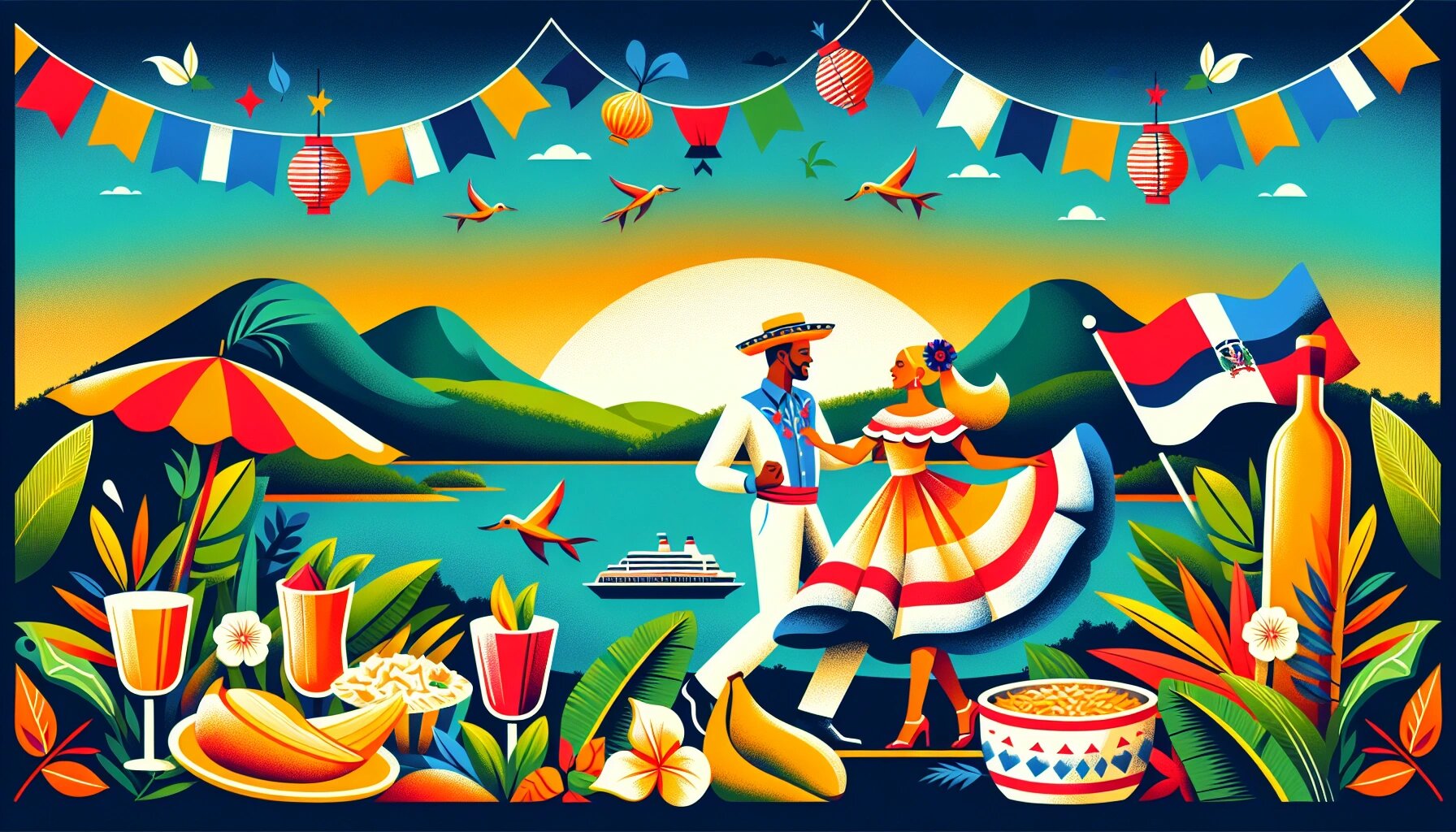
FOMO on Local Culture? Exploring Dominican Traditions & Festivals Around Caleton, Cap Cana
Nestled within the lush landscapes and azure waters of Cap Cana, the Dominican Republic is a treasure trove of cultural heritage. This vibrant tapestry of traditions is shaped by a rich historical backdrop, pulsating rhythms, and intricate artistry that reflect the soul of the Dominican people.
1. Historical Influences on Dominican Culture
The cultural landscape of the Dominican Republic is an intricate blend of historical influences that have shaped its traditions over centuries. The island’s history is a tapestry woven with threads from the indigenous Taino people, African slaves, and Spanish colonizers. These diverse influences are evident in the language, religion, and customs that define Dominican culture today.
The Tainos, the original inhabitants, left an indelible mark on the island’s culture. Their influence is visible in the language, with many place names and words in the Dominican lexicon having Taino origins. The African influence, stemming from the transatlantic slave trade, is profound, particularly in music and dance, where rhythms like Merengue and Bachata find their roots. Spanish colonization introduced Catholicism, which remains a dominant force, influencing many of the island’s festivals and traditions.
To truly appreciate these cultural influences, consider visiting local museums and historical sites around Caleton, Cap Cana. These locations offer an immersive experience into the island’s past, providing context to the vibrant traditions that thrive today.
2. Traditional Dominican Music and Dance
Dominican music and dance are the heartbeat of the nation’s culture, characterized by infectious rhythms and vibrant energy. Two of the most iconic styles are Merengue and Bachata, both of which originate from the Dominican Republic and have gained international acclaim.
Merengue, often referred to as the national dance, is a lively and energetic style that involves quick footwork and fluid movements. Its beats are rooted in African rhythms and are accompanied by instruments like the tambora, güira, and accordion. Bachata, on the other hand, is more romantic and soulful, characterized by its slower tempo and poignant lyrics.
For those looking to immerse themselves in these musical traditions, local dance schools and music venues around Cap Cana offer lessons and live performances. Engaging with the local music scene not only provides entertainment but also a deeper understanding of the cultural significance behind these art forms.
3. Local Art and Craftsmanship
The artistic expression in the Dominican Republic is a vivid reflection of its cultural identity, with local artisans producing works that are both beautiful and meaningful. Arts and crafts in the region often incorporate natural materials such as larimar, a rare blue stone found only in the Dominican Republic, and mahogany wood.
Traditional crafts include intricate pottery, vibrant paintings, and handmade jewelry, each piece telling its own story of cultural heritage. These crafts are not only decorative but also serve as a means of preserving traditions passed down through generations.
Visitors to Caleton, Cap Cana can explore local markets and galleries where these crafts are showcased. These venues offer a unique opportunity to purchase authentic Dominican art, providing a tangible connection to the island’s rich cultural tapestry.
Traditional Dominican Crafts Overview
| Craft Type | Materials Used | Cultural Significance | Where to Buy |
|---|---|---|---|
| Larimar Jewelry | Larimar Stone | Symbolizes Dominican identity | Local markets |
| Pottery | Clay | Reflects indigenous Taino techniques | Artisan shops |
| Woodwork | Mahogany | Represents traditional craftsmanship | Galleries |
By exploring these rich traditions, visitors can truly appreciate the vibrant cultural heritage of the Dominican Republic. From historical influences to music, dance, and craftsmanship, each aspect offers a glimpse into the soul of the Dominican people.
Vibrant Festivals Celebrating Dominican Heritage
Immerse yourself in the lively spirit of the Dominican Republic through its vibrant festivals. These celebrations are a vivid expression of the nation’s rich cultural tapestry, offering visitors a chance to witness the community’s deep-rooted traditions and exuberant joy.
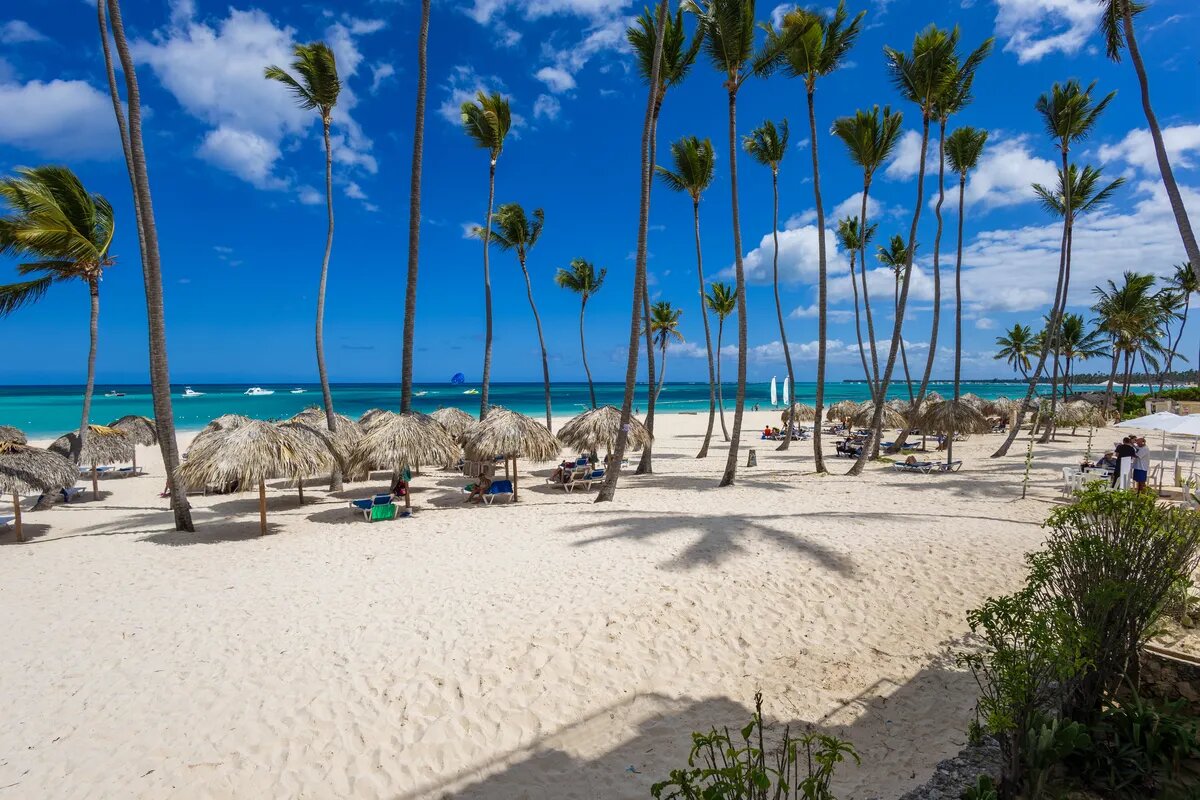
Punta Cana
1. Carnaval in the Dominican Republic
The Carnaval in the Dominican Republic is a spectacle of color, music, and energy that captures the essence of Dominican culture. Celebrated every February, this festival is a flamboyant display of the nation’s historical, cultural, and religious influences.
Carnaval’s roots trace back to the colonial era, combining African, Taino, and Spanish traditions into a unique cultural tapestry. Participants don elaborate costumes, often representing mythical characters such as the Diablo Cojuelo (Limping Devil) and Roba la Gallina (Steal the Hen), symbolizing freedom and rebellion against colonial powers.
The festival’s main events occur in cities like Santiago and La Vega, but smaller celebrations are held throughout the country, including the Cap Cana area. Visitors can expect to see parades filled with vibrant floats, live music, and dancers moving to the rhythmic beats of merengue and bachata. It’s an opportunity to experience the unbridled joy and resilience of the Dominican people.
2. Merengue Festival in Santo Domingo
The Merengue Festival in Santo Domingo is a celebration of music and dance that showcases the Dominican Republic’s national dance, merengue. Typically held in late July or early August, this event transforms the capital into a bustling hub of activity and entertainment.
The festival brings together world-renowned merengue bands and local talent, offering performances that range from traditional merengue to modern interpretations. Attendees can enjoy concerts, street parties, and dance competitions that fill the air with contagious energy and rhythm.
Beyond its musical offerings, the Merengue Festival provides insights into Dominican culture, with food stalls serving traditional dishes and artisans displaying their crafts. It’s a perfect opportunity for visitors to join in the dance and experience the nation’s passion for music firsthand.
3. Patronal Festivals and Their Local Variations
Patronal festivals, or fiestas patronales, are pivotal community events held in honor of a town’s patron saint. These festivals are deeply embedded in the Dominican Republic’s cultural and religious fabric, offering a unique glimpse into the local customs and traditions.
Each town celebrates its patron saint with a distinct flair, involving religious ceremonies, parades, and cultural activities. In areas around Cap Cana, these festivals often include lively music, dance, and communal meals, reflecting the community’s strong social bonds and hospitality.
Comparison of Major Patronal Festivals
| Festival | Location | Main Activities | Time of Year |
|---|---|---|---|
| San Juan Bautista | San Juan de la Maguana | Religious processions, cultural performances | June |
| San Pedro | San Pedro de Macorís | Parades, live music, traditional food | June |
| Virgen de la Altagracia | Higüey | Pilgrimages, religious services | January |
Visitors to Cap Cana during these festivals can participate in the celebrations and witness the devotion and community spirit that define the Dominican people. Whether you’re drawn to the religious aspects or the lively music and dancing, these festivals offer a captivating experience of Dominican cultural heritage.
Exploring Local Cuisine and Culinary Traditions
Embark on a culinary journey through the Dominican Republic, where flavors tell the tales of history, culture, and community. The culinary traditions around Caleton, Cap Cana, are a delicious reflection of the island’s diverse heritage.
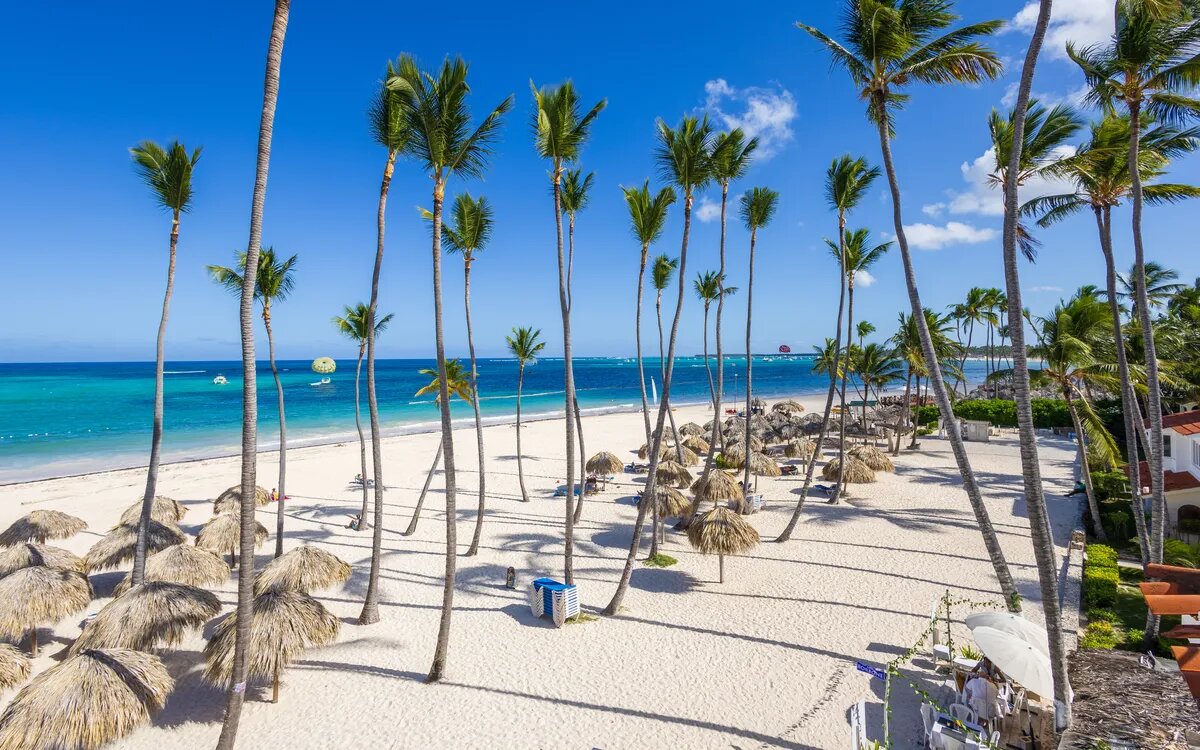
Punta Cana
1. Signature Dominican Dishes to Try
Dominican cuisine is a delightful blend of flavors that capture the essence of the island’s rich cultural tapestry. When visiting Caleton, Cap Cana, there are certain dishes that are not to be missed. La Bandera, which translates to “The Flag,” is the national dish of the Dominican Republic. It consists of white rice, red beans, and meat, typically chicken or beef, accompanied by a side of salad and fried plantains. This dish reflects the colors of the Dominican flag and is a staple in daily Dominican life.
Another must-try is Mangu, a breakfast favorite made from boiled and mashed green plantains. Often served with eggs, fried cheese, and salami, it provides a hearty start to the day. For those with a sweet tooth, Dulce de Coco, a coconut-based dessert, offers a taste of tropical sweetness that’s hard to resist.
2. Traditional Cooking Methods and Ingredients
The culinary heritage of the Dominican Republic is deeply rooted in its traditional cooking methods and local ingredients. One of the most distinctive methods is cooking with fogón, a rustic wood-fired stove that imparts a unique smoky flavor to the food. This method is still used in rural areas and adds an authentic touch to Dominican dishes.
Local ingredients play a vital role in creating the authentic flavors of Dominican cuisine. Plantains, yucca, and yautía are staple ingredients, while spices such as oregano, garlic, and cilantro are often used to season dishes. Seafood, abundant in the coastal regions, is a common feature in many traditional meals, highlighting the island’s close connection to the sea.
3. Influence of African, Taino, and Spanish Flavors
The vibrant flavors of Dominican cuisine are the result of a rich cultural blend. The African influence is evident in the use of root vegetables and the cooking method of frying, which is prevalent in dishes like Tostones (twice-fried plantains).
The Taino, the indigenous people of the island, contributed significantly to the culinary landscape with their use of ingredients like cassava and sweet potatoes. Spanish colonization introduced new flavors and ingredients, such as rice, pork, and various spices, which became integral to Dominican cooking.
Cultural Influences on Dominican Cuisine
| Influence | Key Ingredients | Cooking Methods | Popular Dishes |
|---|---|---|---|
| African | Plantains, root vegetables | Frying | Mangu, Tostones |
| Taino | Cassava, sweet potatoes | Boiling, roasting | Casabe (cassava bread) |
| Spanish | Rice, pork, spices | Sautéing, baking | La Bandera, Pastelón |
The fusion of these cultural influences has created a cuisine that is both diverse and deeply connected to the island’s history. Each dish tells a story of the past, offering a taste of the Dominican Republic’s rich cultural heritage.
Our Culinary Experiences in Cap Cana
Immerse yourself in the authentic flavors of the Dominican Republic by exploring our curated culinary experiences. Enjoy traditional dishes prepared by local chefs, and savor the vibrant tastes that define the region.

Brand New Luxury 6-BR Cap Cana Villa for Rent – Pool, Chef, Golf & Ocean View
from $6490 / night Read more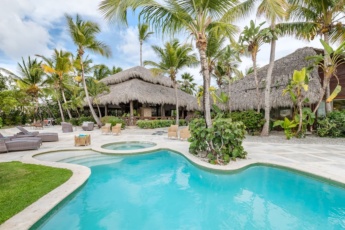
Luxury Cap Cana Caleton villa for rent – Spacious 5BR villa in Bali-style
from $3894 / night Read moreConnecting with the Community: Participating in Local Traditions
Engaging with the local community in Caleton, Cap Cana, offers a unique opportunity to delve deep into Dominican traditions and culture. By participating in community events and cultural practices, visitors can gain a genuine appreciation for the vibrant spirit and heritage that define this remarkable region.
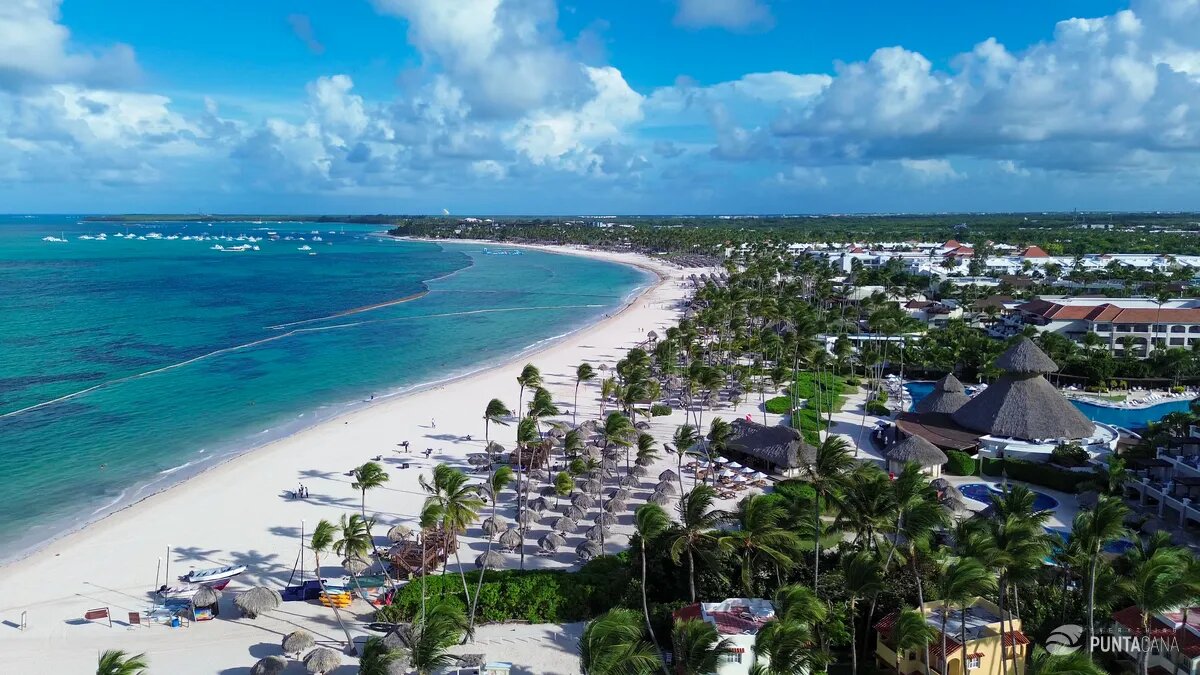
Punta Cana, drone view
1. Guidelines for Respectful Cultural Engagement
Understanding and respecting the cultural nuances of the Dominican Republic is crucial for those looking to engage with local traditions. It’s important to approach these experiences with an open mind and a respectful attitude. Here are some essential guidelines:
- Learn Basic Spanish Phrases: While many Dominicans speak English, knowing a few Spanish phrases can greatly enhance communication and show respect for the local language.
- Dress Appropriately: Modesty is valued in many traditional settings, so dressing conservatively is advised when attending cultural events or visiting religious sites.
- Observe and Adapt: Pay attention to local customs and body language, adapting your behavior to align with cultural norms.
These practices not only demonstrate respect but also create a more enriching experience for both visitors and hosts.
2. Local Community Events and Gatherings
Participating in local gatherings is one of the most immersive ways to experience Dominican culture. These events offer insight into the daily lives and traditions of the community.
- Cultural Nights: Many towns near Cap Cana host cultural nights where visitors can enjoy traditional music, dance, and food. These events are perfect for mingling with locals and learning about their customs.
- Farmers’ Markets: Visiting a local farmers’ market provides a glimpse into the culinary traditions of the area. It’s an excellent opportunity to taste fresh produce and local delicacies.
- Community Workshops: Workshops on traditional crafts, cooking, or dance are often available, allowing visitors to learn new skills while appreciating the rich cultural heritage.
These events not only enhance cultural understanding but also foster a sense of community between visitors and residents.
3. Volunteering Opportunities in Cultural Festivals
Volunteering at cultural festivals is a rewarding way to contribute to the local community while experiencing Dominican culture firsthand. These opportunities allow visitors to engage in meaningful interactions and create lasting memories.
- Festival Setup and Coordination: Assisting in the preparation and execution of festivals can provide behind-the-scenes insights into the traditions and logistics of these events.
- Cultural Exchanges: Participating in exchange programs or cultural talks can help spread awareness about the importance of preserving Dominican traditions.
- Community Support Roles: Roles such as guiding visitors or helping with logistics can be invaluable during busy festival periods.
Volunteering offers a unique perspective and fosters a deeper connection with the culture and people of the Dominican Republic.
Local Community Engagement Opportunities in Cap Cana
| Event Type | Description | How to Participate |
|---|---|---|
| Cultural Nights | Evenings filled with traditional music and dance | Attend and engage with locals |
| Farmers’ Markets | Explore local produce and delicacies | Visit and interact with vendors |
| Festival Volunteering | Help with event setup and coordination | Sign up through local community centers |
By embracing these opportunities, visitors to Caleton, Cap Cana, can cultivate a deeper understanding and appreciation of Dominican culture, contributing to the preservation and celebration of its rich traditions.
Planning Your Visit: Tips for Experiencing Dominican Culture
Planning a trip to the Dominican Republic offers travelers a chance to experience a rich tapestry of culture and tradition. Whether you’re enticed by the rhythmic beats of merengue or the vibrant festivities of local carnivals, immersing yourself in the local culture around Caleton, Cap Cana is an experience not to be missed. This section provides practical advice to help you make the most of your cultural exploration.
1. Best Times to Visit for Cultural Experiences
The Dominican Republic boasts a calendar filled with cultural celebrations and festivals, each offering a unique peek into its vibrant heritage. Timing your visit to coincide with these events can elevate your travel experience.
To truly experience the essence of Dominican culture, consider visiting during the Carnaval de La Vega, typically held in February. This grand festival is a dazzling display of costumes, music, and dance, reflecting the nation’s diverse cultural influences. Alternatively, the Merengue Festival in late July or early August is a must-see for music enthusiasts, showcasing the country’s signature dance style.
Aside from these larger festivals, the Patronal Festivals celebrated throughout the year in various towns around Cap Cana offer intimate encounters with local traditions. Each town honors its patron saint with music, parades, and traditional foods, providing visitors a cozy yet vibrant cultural immersion.
2. Navigating Around Caleton, Cap Cana
Exploring the cultural sites and festivities in Caleton, Cap Cana requires some planning, especially if you aim to experience the area like a local.
Transportation is key to accessing various cultural hotspots. Renting a car is a popular option for those who prefer flexibility, as it allows you to move at your own pace and explore off-the-beaten-path attractions. Alternatively, local taxis and shuttle services can be convenient for shorter trips or if you prefer not to drive.
It’s also worthwhile to invest in a local SIM card or portable Wi-Fi device to stay connected. This not only helps with navigation using apps like Google Maps but also allows you to stay updated on any last-minute changes in festival schedules or events.
Transportation Options in Cap Cana
| Option | Cost Range | Pros | Cons |
|---|---|---|---|
| Car Rental | $40-$80/day | Flexibility, Explore more areas | Parking, Traffic |
| Local Taxi | $10-$30/trip | Convenient, No driving needed | Cost for long distances |
| Shuttle Service | $20-$50/person | Reliable, Scheduled routes | Limited destinations |
3. Local Accommodations with Cultural Flair
To truly soak in the local atmosphere, consider staying in accommodations that offer a cultural experience. Caleton, Cap Cana is home to several unique lodging options that blend luxury with cultural charm.
Many resorts and villas in the area incorporate traditional Dominican architecture and design elements, providing an authentic ambiance. Look for accommodations that offer cultural activities such as cooking classes, dance lessons, or guided tours of nearby cultural sites.
Our Best Caleton Villa Rentals for Cultural Experiences
For those seeking an immersive cultural stay, our carefully selected villa rentals in Caleton offer not only comfort but also a touch of local tradition. Each villa provides a unique opportunity to experience the Dominican Republic’s rich culture through architecture, decor, and curated experiences.
Wherever you choose to stay, engaging with the community and partaking in local traditions will undoubtedly enrich your visit. Whether you’re exploring cultural festivals or savoring Dominican cuisine, these experiences will leave you with memories that last a lifetime.
Frequently Asked Questions
What are some must-see festivals in Caleton, Cap Cana?
Caleton, Cap Cana offers a vibrant array of local festivals. Two must-see events include the Carnival in Punta Cana, celebrated with colorful parades and lively music, and the Merengue Festival, which showcases the best of Dominican music and dance.
When is the best time to visit Caleton, Cap Cana for local cultural experiences?
The best time to visit Caleton, Cap Cana for local cultural experiences is during the spring and summer months, especially around February and August, when major festivals like Carnival and the Merengue Festival take place.
Are the festivals in Caleton, Cap Cana family-friendly?
Yes, most festivals in Caleton, Cap Cana are family-friendly. Events like Carnival feature parades and activities that are enjoyable for both adults and children, making it a great way to experience local culture with the family.
How can travelers participate in local traditions while visiting Caleton, Cap Cana?
Travelers can participate in local traditions by joining festival activities, trying traditional Dominican dishes, and engaging with local artisans to learn about their crafts. Attending workshops or dance classes is another fun way to immerse in the culture.
What should I wear to a festival in Caleton, Cap Cana?
When attending a festival in Caleton, Cap Cana, it’s best to wear light, comfortable clothing suitable for warm weather. Bright colors are popular during celebrations. Comfortable shoes are recommended for walking or dancing.
Is it safe to attend festivals in Caleton, Cap Cana?
Festivals in Caleton, Cap Cana are generally safe, but it’s always wise to stay aware of your surroundings and keep personal belongings secure. Traveling in a group or with a local guide can enhance your safety and experience.
How do I find out about upcoming festivals in Caleton, Cap Cana?
You can find information about upcoming festivals in Caleton, Cap Cana by checking local tourism websites, contacting hotels or resorts in the area, or connecting with travel forums and social media groups focused on the Dominican Republic.
Can I take photos during the festivals in Caleton, Cap Cana?
Yes, taking photos is generally allowed and encouraged during festivals to capture the vibrant atmosphere. However, always be respectful by asking permission before photographing individuals, particularly in more intimate cultural settings.
Updated on: . Author:
